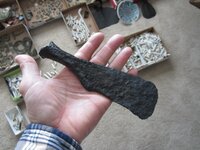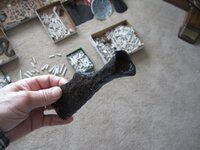Bill D. (VA)
Silver Member
Found this at my 1600s mill site a couple weeks ago, and finally finished up the electrolysis work on it. I posted this before right after I first dug it, and a couple posters complimented me on a nice "axe". But this can't be an axe based on how it's made. I would think it's more in line with a splitter or chisel of some sort. Can anyone definitively ID this piece? Thanks.











